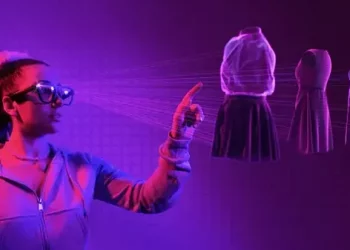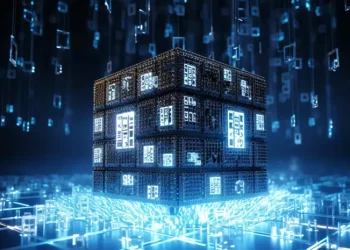Origins of Second Life
Second Life was launched in 2003 by Linden Lab, a company founded by Philip Rosedale. Unlike many early online platforms, Second Life was designed not just as a game but as a fully immersive virtual world. The idea was to create a digital environment where users could live, work, and interact much like they do in the real world.
Concept and Vision
The vision behind Second Life was to create a space where people could escape the confines of the physical world and explore new possibilities. The platform was designed to be a virtual universe with its own economy, social systems, and creative opportunities. Users, known as “Residents,” can create and customize their avatars, build structures, and develop content, offering a high degree of freedom and creativity.
Features of Second Life
Second Life offers a range of features that distinguish it from other virtual environments. These features contribute to its status as a metaverse and provide users with a rich, immersive experience.
User-Generated Content
One of the defining features of Second Life is its emphasis on user-generated content. Unlike many virtual worlds where content is created primarily by developers, Second Life allows its residents to create and share their own content. This includes:
Avatar Customization: Users can customize their avatars in numerous ways, from physical appearance to clothing and accessories.
Building and Design: Residents can design and build their own virtual spaces, including homes, businesses, and entire communities.
Scripting and Programming: Advanced users can create interactive objects and experiences using the platform’s scripting language, Linden Script Language (LSL).
Virtual Economy
Second Life has a robust virtual economy that operates similarly to real-world economies. Key aspects include:
Currency: The platform uses its own virtual currency, known as the Linden Dollar (L$), which can be exchanged for real-world currency. This allows residents to buy, sell, and trade virtual goods and services.
Commerce: Residents can establish businesses, sell virtual items, and offer services within the platform. This creates a dynamic marketplace where users can engage in economic activities.
Land Ownership: Users can purchase virtual land and develop it according to their preferences. Land ownership is a significant aspect of the virtual economy and offers opportunities for investment and development.
Social Interaction
Second Life emphasizes social interaction and community building. Features that facilitate this include:
Social Spaces: The platform provides various social spaces, including clubs, lounges, and public areas where users can meet and interact.
Events and Gatherings: Residents can organize and attend events such as concerts, parties, and conferences. These events can range from casual social gatherings to professional networking opportunities.
Communication Tools: Second Life includes various communication tools, such as chat, voice communication, and group messaging, to facilitate interaction between users.
Creativity and Innovation
Second Life is renowned for its creative possibilities. The platform provides tools and resources for users to express their creativity in numerous ways:
Art and Design: Artists and designers can showcase their work, create virtual galleries, and engage with other creative individuals.
Performance and Entertainment: Musicians, performers, and entertainers can use Second Life as a stage to reach audiences and build their virtual presence.
Education and Training: Educational institutions and organizations can use Second Life for virtual classrooms, training simulations, and interactive learning experiences.
Impact of Second Life
Second Life has had a significant impact on the development of virtual worlds and the metaverse. Its influence extends across various domains, including technology, culture, and commerce.
Technological Innovations
Second Life has been a testing ground for various technological innovations in the virtual space. Some notable contributions include:
Virtual Reality Development: Second Life has contributed to the advancement of virtual reality (VR) technologies by providing a platform for experimenting with immersive environments.
Digital Economy Models: The virtual economy of Second Life has served as a model for other virtual worlds and online platforms, influencing how digital currencies and marketplaces are structured.
User-Generated Content: The emphasis on user-generated content has inspired other platforms to adopt similar approaches, allowing users to contribute and create within virtual spaces.
Cultural Influence
Second Life has also had a significant cultural impact. It has:
Pioneered Virtual Communities: The platform has demonstrated the potential for virtual communities to thrive, influencing the development of other social and collaborative online spaces.
Promoted Digital Creativity: Second Life has provided a space for digital artists, musicians, and creators to showcase their work and reach new audiences.
Facilitated Social Experimentation: The platform has allowed users to explore different aspects of identity, social interaction, and community building in a virtual context.
Commercial Opportunities
The virtual economy of Second Life has created commercial opportunities for businesses and entrepreneurs. Examples include:
Virtual Real Estate: The market for virtual land and property has created investment opportunities and business ventures focused on virtual real estate development.
Digital Goods and Services: The sale of virtual goods, such as clothing, accessories, and customizations, has led to the growth of a digital marketplace within the platform.
Advertising and Sponsorship: Brands and businesses have used Second Life as a platform for advertising and sponsorship, reaching a niche audience within the virtual world.
Second Life and the Metaverse
Second Life is often considered one of the earliest examples of a metaverse, a term that refers to a collective virtual shared space created by the convergence of virtually enhanced physical reality and physically persistent virtual reality. The platform has paved the way for the development of more advanced and integrated metaverse experiences.
Contributions to Metaverse Concepts
Second Life has contributed to the development of key metaverse concepts, including:
Persistent Virtual Worlds: The idea of a continuous, evolving virtual world where users can interact and create has been central to Second Life and has influenced subsequent metaverse platforms.
User Agency: Second Life’s focus on user-generated content and customization has set a precedent for allowing users to shape their virtual experiences and environments.
Virtual Economy Integration: The integration of a virtual economy with real-world financial systems has influenced how other metaverse platforms approach economic activities and transactions.
Comparison with Modern Metaverse Platforms
While Second Life has been influential, the modern metaverse is evolving with new technologies and platforms. Some key differences include:
Technological Advancements: Newer metaverse platforms often incorporate advanced technologies such as virtual reality (VR), augmented reality (AR), and blockchain, offering more immersive and integrated experiences.
Interoperability: Modern metaverse platforms emphasize interoperability, allowing users to move seamlessly between different virtual spaces and carry assets across platforms.
Enhanced Social Interaction: Newer platforms focus on enhancing social interaction with more advanced communication tools, collaboration features, and community-building opportunities.
Future of Second Life
As technology continues to evolve, Second Life remains a relevant and influential platform within the metaverse landscape. The future of Second Life may involve:
Continued Innovation
Second Life is likely to continue innovating and adapting to new technologies. This could include:
Integration with VR and AR: Enhancing the virtual experience with VR and AR technologies to provide more immersive interactions.
Advanced User Tools: Developing new tools and features for users to create, customize, and interact within the virtual world.
Evolving Community and Economy
The community and economy within Second Life may also evolve, with potential developments such as:
Increased Collaboration: Facilitating greater collaboration between users and organizations within the platform.
Expanded Commercial Opportunities: Exploring new commercial models and opportunities in the virtual economy.
Integration with Emerging Metaverse Platforms
Second Life may play a role in the broader metaverse ecosystem by integrating with emerging platforms and technologies. This could include:
Cross-Platform Interaction: Allowing users to interact and share assets between Second Life and other metaverse environments.
Partnerships and Collaborations: Collaborating with other metaverse platforms to enhance the overall virtual experience.
See also: Is the Metaverse Private or Public ?
Conclusion
Second Life stands as a pioneering example of the metaverse, offering a rich and diverse virtual world where users can create, interact, and thrive. Since its launch in 2003, Second Life has influenced the development of virtual worlds and the metaverse, shaping concepts related to virtual economies, user-generated content, and digital interaction.
As technology advances and the metaverse continues to evolve, Second Life remains a significant platform, demonstrating the potential for virtual spaces to offer immersive, interactive, and creative experiences. Its contributions to the metaverse concept and its ongoing innovations ensure that Second Life will continue to be a relevant and influential part of the digital landscape.
In understanding Second Life, we gain insight into the possibilities and challenges of the metaverse, highlighting the importance of continued exploration and development in this exciting and evolving field.
Related topics:

















